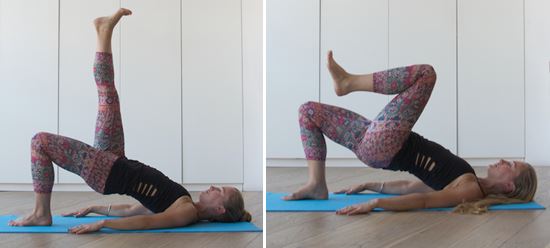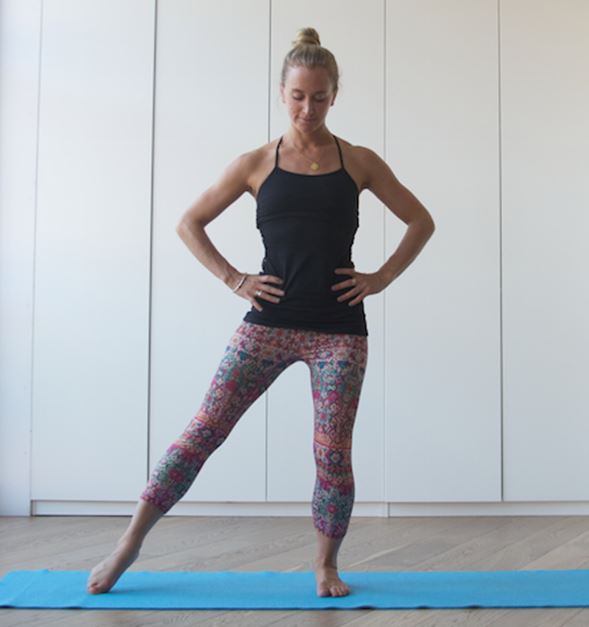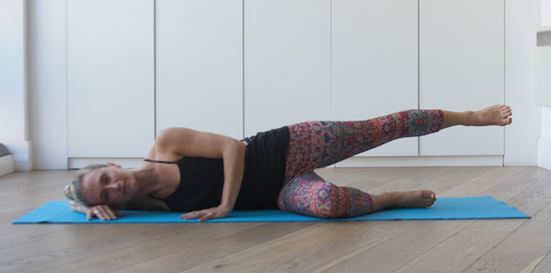Dedicating time during our physical yoga practice to opening the hips can be both nourishing and therapeutic for the body. That sense of release in pigeon pose can be pretty addictive for many of us! However, do we always need to push for more flexibility in this region of the body or could it be helpful to build more strength?
We need hip strength to live our day-to-day lives. Whether we are walking in the park, running for the bus or cycling to work, our hip joint takes the brunt of our weight and enables us to do all of these fundamental actions. In truth, there’s a reason why the hips are built to be so stable: to enable us to carry our bodies throughout the day.
Of course if you are an athlete, keen runner or particularly tight in this area of the body, hip opening poses are helpful in maintaining a healthy balance between strength and flexibility. However, what if you are naturally quite open in the hips or what if you had tight hips when you first started yoga but after years of practicing hip opening poses now have very open hips, is it still helpful to continue increasing the range of motion in this region of the body?
I’ve always been ‘blessed’ with open hips so when I first started yoga, I never shied away from any postures that required increased range of motion in this region of the body. I could fall asleep with my legs wrapped behind my head, but was it therapeutic? I certainly looked like an advanced yoga in these postures but unfortunately my lack of knowledge and understanding of the hip joint meant that I could have been doing more damage to my body than good.
The hip joint is a ‘ball and socket’ joint composed of two bones. The femur sits in the acetabulum, which is part of the pelvis. Covering the bones of the hip is the articular cartilage. The articular cartilage is important for providing a cushion and a smooth surface when the bones move on one another. Surrounding the acetabulum is additional cartilage called the labrum, which forms a lip around the cup shaped bone to provide additional stability in the joint.
Whilst it is helpful knowing the anatomy of the hip, probably the most important (and a little bit frightening) piece of information that you need to remember is that one of the deepest layers of the joint, the cartilage, does not have nerve endings. This means that you may not be aware of any damage to the cartilage until it is too late. Although cartilage doesn’t have nerve endings, the surrounding muscles, tendons, and ligaments do, which is why yoga can be helpful for finding a balance between strength and flexibility.
So if you already enjoy the benefits of having more open hips, modifying your daily yoga practice by including certain exercises to increase hip strength can be a helpful option for maintaining the integrity of the hip joint. Here are three yoga inspired exercises that you can add into your daily practice to increase stability in the hip:
Bridge Variation

Lie on your back with your knees bent, feet hip width apart and knees directly above your ankles. Place your arms on either side of your body with your palms facing down. Lengthen your tailbone toward the front of your mat. Lift one leg so that it is perpendicular to the floor (option to bend knee). On your inhalation, keep your leg raised and lift your hips off the ground into a bridge position. On your exhalation, still with your leg raised, lower your hips to the ground again. Repeat the exercise for 5 rounds of breath on each side.
Chair Variation

For this exercise, hold Chair pose with your feet hip width apart. As you inhale, straighten one leg to the side and as your exhale bring it back to it’s original position. Repeat the exercise on each side 10 times or until the hip stabilising muscles starts to fatigue.
Leg raises

This final exercise, lie on your side and rest your head on your arm. Bend your bottom leg to approximately 90 degrees so that you have a steady base. Raise your top leg until it is about 30cm from the ground. Keep the foot of your raised leg flexed and ensure that your top leg extends in a straight line from your spine. Keep your leg raised for 10 breaths and relax the leg for 5 breaths. Repeat the exercise for 3 rounds on each side.
Yoga is an enticing practice and the more challenging postures can be very tempting for the ego. Whilst we can learn so much from practicing these more advanced postures that require increased flexibility or strength, our yoga practice is so much more than being able to wrap our leg around the back of the head. Yoga is about tuning into our bodies to find a balance of strength and flexibility for health of the muscles and the integrity of the joints. By listening to our bodies with this sense of mindfulness we can begin to notice our strengths and weaknesses, which enables us to develop a nourishing practice that our bodies truly need.
